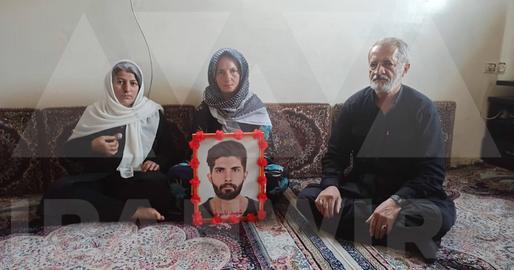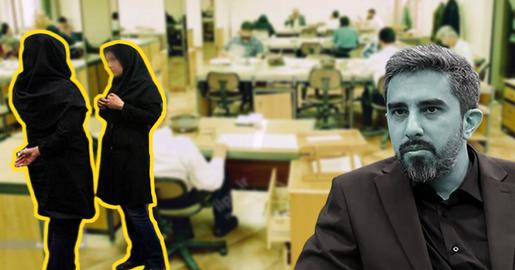On this year's International Labor Day, Iranian workers find themselves amidst continued impoverishment, suppression of independent organizations, and the arrest and imprisonment of their fellow workers.
Their basic demands remain largely overlooked by government leaders.
Adding to the disillusionment, Supreme Leader Ali Khamenei recently addressed a select group of workers, focusing solely on the goal of a "production leap" without acknowledging their inherent rights.
Conversely, those outside the favoured religious groups were relegated to minority status, receiving fewer benefits and facing oppression.
For instance, during the Achaemenid period, Jewish believers, as non-Persians, experienced discrimination and oppression under Persian rule.
With the advent of Islam in Iran, non-Muslims faced similar challenges. Until the reign of Al-Ziyar and Al-Buyeh, the Shia themselves were considered a minority.
Each new regime, except for the Parthians' five-century rule, elevated its religion to the dominant position, relegating other faiths, including those of preceding governments, to minority status with fewer privileges and more adversity.
The Safavid dynasty, by institutionalizing Shia Islam and establishing Isfahan as its opulent capital, solidified Shia dominance while marginalizing Sunni practices.
Safavid Iran forged a national identity rooted in Shia Islam, positioning itself in opposition to the Ottoman Empire's Sunni rule.
Under this paradigm, Shia Islam became synonymous with sovereignty and ownership, while other faiths were relegated to minority status.
The plight of non-Shia Muslims, particularly Sunnis, was exacerbated as they were not only considered outsiders but also perceived as adversaries due to their religious alignment with the Ottoman Empire, with whom the Safavids often clashed.
Armenians: Pioneering Rich Beyond Government Sphere
During the Safavid-Ottoman confrontations and the shift of the capital to Isfahan, a burgeoning need arose for labor and capital to fuel the city's construction boom.
In this context, Armenians, migrating from the Ottoman-influenced old Jolfa to Iran, emerged as the first independent group of capital owners and artisans, contributing to various industries like stone carving.
Meanwhile, the Jewish minority primarily engaged in labor to sustain themselves.
Over time, Armenians, leveraging their skills and industriousness, played a pivotal role in transforming Isfahan into a prosperous city.
Their significant contributions not only garnered favour from Safavid monarchs but also drew envy from Shah Abbas II, prompting them to acquire Zoroastrian lands and establish the new Jolfa neighbourhood, which remains a hub of economic affluence to this day.
Despite being non-Muslims, Armenians were embraced by Safavid rulers, owing to their instrumental role in Isfahan's development.
This marked a significant departure as they were among the first immigrant capitalists with a different religious background from the ruling class, yet their invaluable contributions warranted special attention.
However, the daily lives of non-Muslims, including Armenians, were marked by restrictions.
They faced challenges accessing markets and conducting business, often barred from venturing out on rainy days or handling goods directly—a practice reminiscent of Shia rulings still observed today.
Despite these constraints, Armenians enjoyed relatively favourable treatment, facilitated by Shia principles that allowed for pragmatic adaptation to prevailing circumstances.
The rulers' reliance on the financial resources of non-Muslims incentivized a more accommodating approach towards Armenians.
This leniency persisted into the Qajar dynasty, enabling Zoroastrians to establish commercial enterprises and even extend loans to the Qajar royal family for foreign journeys.
The Rich Becomes Shia
During the Safavid dynasty, geopolitical shifts and the Ottoman Empire's closure of trade routes prompted Portuguese incursions into southern Iranian waters, marking the entry of the first European colonists.
Safavid rulers, seeking to expel the Portuguese, leveraged concepts like national identity, rooted in Shia Islam, as a rallying point against Ottoman influence.
The defeat of the Portuguese opened avenues for foreign trade in Iran, catalyzing a new era of wealth accumulation and income generation.
This period coincided with Western advancements in capital accumulation and mass production, setting the stage for Iran's engagement with evolving global trade dynamics.
The Qajar era witnessed significant societal transformation, spurred by monarchs' exposure to democratic principles and foreign investments during their trips to Europe.
Sultan Sahibqaran, for instance, initiated modernization efforts, including educational reforms. Unlike the Safavid era, where Naser al-Din Shah held absolute control over capital and land, Armenians transitioned to a lower-class role and active participants in Iran's modernization efforts, especially in cultural spheres like art, cinema, and music.
The constitutional movement marked a shift towards nationalization of ownership, subsequently transitioning to private sector control.
Despite continued government pressure, Baha'is, once targeted for persecution, assumed a significant role in Iran's capitalist class during the Pahlavi dynasty.
Jews and Zoroastrians, meanwhile, emerged as key economic players, gradually gaining political influence.
Iran's march towards modernity accelerated during Reza Shah's reign, characterized by infrastructure developments like the South-North Railway.
Mohammad Reza Shah's era witnessed rapid industrialization and wealth accumulation, fostering a capitalist ethos in Iran.
As religious minorities experienced socioeconomic shifts, they assumed control of key industries, with factories like the Arj plant, established by Khalil Arjmand, a prominent Baha'i figure, exemplifying their economic ascendancy.
Impact of the 1979 Revolution: Transformation of Minority Economic Class
Since the outset of the 1979 revolution, a significant number of Iranian rich—many belonging to religious and ethnic minorities—have faced persecution, leading to executions, confiscation of property, and nationalization of businesses by the government.
This ongoing coercion has prompted minorities to flee Iran, abandoning joint economic ventures with foreign partners, such as the Persians of India.
As a result, the departure of minority capitalists has left behind working-class communities with limited financial resources and little opportunity for upward mobility due to discriminatory practices.
Continued repression has relegated religious minorities to the working class, evident in Sunni regions where high unemployment rates force residents to engage in menial labor to sustain themselves while lacking basic social rights afforded to the working class.
Official statistics from the Islamic Republic reveal that Kurdistan, a predominantly Sunni province, had the highest unemployment rate in Iran in 2022.
This stark reality underscores the deprivation experienced by
Sunni communities, cementing their status as one of Iran's most economically marginalized provinces.
Class Oppression
While Muslim rich and working-class segments exist in Iran, it's evident that religious minorities face compounded discrimination.
Not only are they marginalized due to their beliefs, but their economic status as part of the working class further exacerbates their plight.
Economic deprivation stifles their potential for innovation and growth, hindering their ability to achieve higher social productivity compared to non-minority labor groups.
These factors collectively diminish their capacity to advocate for their rights effectively.
From a broader societal perspective, a lack of equal access to financial, economic, and political resources for religious, ethnic, gender, ideological, and racial groups undermines their ability to assert their rights across various social, civil, cultural, and educational domains.
In essence, a society governed by such systemic inequalities cannot rightfully claim to be democratic.


























comments